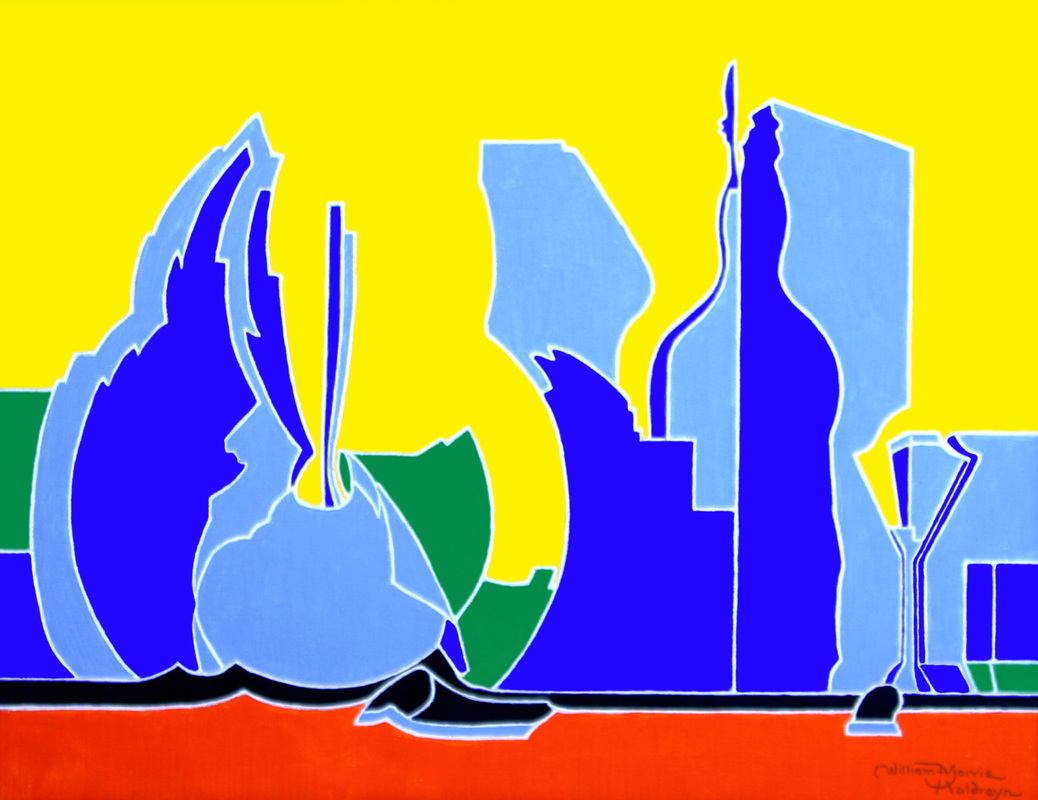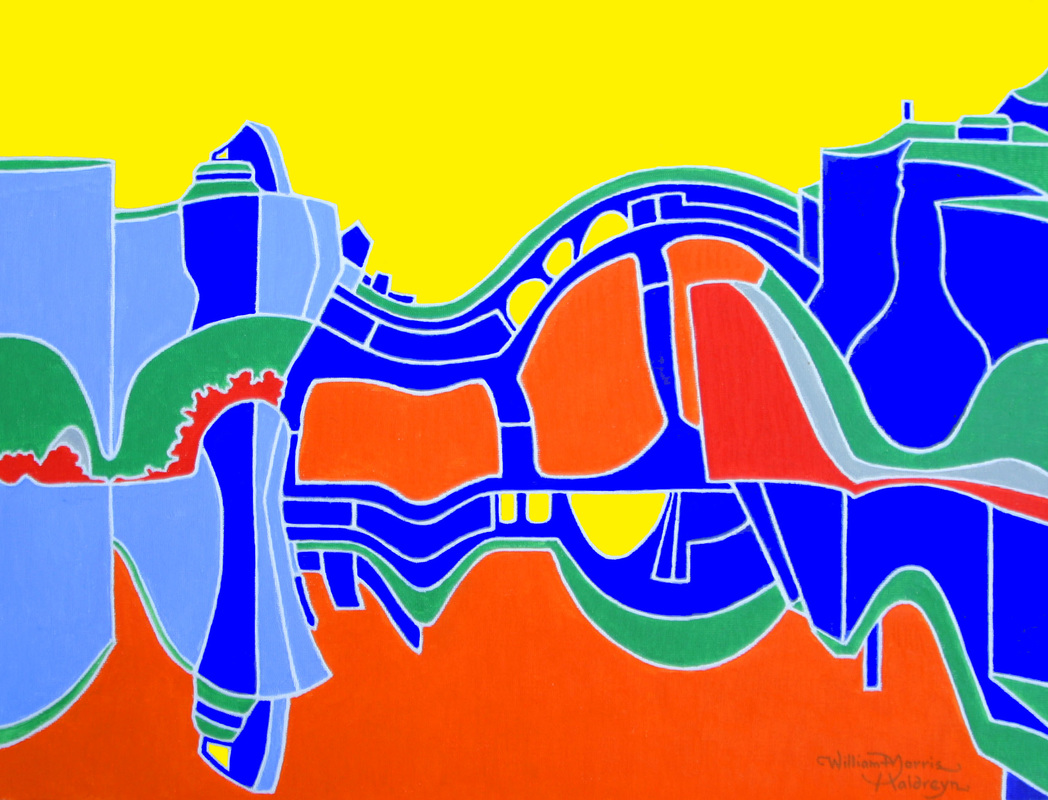Modulated Transformation
These paintings are based on analogue modulation similar to that employed in electromagnetic wave communication where a first signal, the modulating signal, is used to modulate a second, different signal, the carrier signal. This type of transformal painting employs a palette of brilliant and vibrant colours to paint flat forms which distance themselves from reality and uses a cloissonist outline around each pure colour form to fix the painting to its substrate, an element of post-impressionist style. The aim initially was that a still life arrangement could be used as the modulating signal, with the skyline acting as the carrier signal to be modulated by that modulating signal. Still life arrangements of bottles, plates and glasses to form the modulating signals were transformed into master graticules which were then imposed on various sections of the city skyline of Manhattan, where this form of art was devised, to modulate them graphically. The results were cityscapes which carried elements of still life forms as can be seen in the first of the paintings above, Manhattan II. The second painting shows a modulated transformation of the Ponte Vecchio in Florence.


